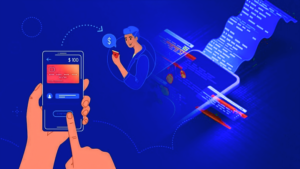
How a BDE Connects Business Vision With Technology
How a BDE Connects Business Vision With Technology Kumkum Kumari 21/11/2025At Speqto, we work with organizations that are constantly evolving entering new markets, scaling operations, or […]


With the continuous advancement in the tech world, Web development has come a long way, with new technologies, frameworks, libraries, and tools regularly introduced. To stay updated with this fast-changing world, developers must keep a sharp eye on these latest developments. This blog will briefly discuss the latest web development tech stack, which can help developers add value to their knowledge and upgrade their skills. And further, we will assist you with valuable tips on selecting the right technologies for your project. The appropriate selection of tech stack in web development plays an important role in ensuring that your product is authentic and reliable to meet your buyer’s expectations.so, without further delay, let’s get started! But first of all, let’s understand what a web development stack is.
To understand the web development tech stack better, let us know about the term’ tech stack.’ A tech stack is a mix of technologies used by developers to develop any applications. It includes the combination of various programming languages, databases, libraries, servers, softwares, and frameworks. These are also referred to as solutions stacks or as web development stacks. The combination of this web development tech stack may vary depending on the project requirements. While web developers are not bound to use any particular tech stack, they can also create a mix of technologies depending on their client’s project needs. However, some of the standard tech stacks have already gained widespread popularity among developers, as we will be discussing further. The tech stack is inclusive of two main components, i.e., Front-end and the back end.
The front end of a web application refers to the areas where users can interact directly. It is precisely what users can see and use when they browse the web. Some of the front-end tech stack’s main components include HTML, CSS, and javascript.
HTML
HyperText Markup Language is a well-known programming language used for framing a web page structure to be displayed in a web browser. It assists in defining the meaning and relevancy of web content for the structure. i.e., it is a standardised system helping tag text files on world wide web pages. It can showcase dynamic font type, colour, graphics, and hyperlink effects. It is a medium to create structured documents using structural semantics for text, combining headings, paragraphs, links, quotes, and other Items.
CSS
CSS (Cascading style sheets) is a style sheet language used to define how the text written in HTML will be showcased on the client’s screen. With CSS, you can enhance the user’s accessibility to content by using different fonts, colours, transitions, and animations, which helps in giving clear illustrations about the separation of content and layout, offering you more authority and flexibility to control the specification of presentation.
Javascript
Javascript is a programming language that helps add creativity to any website by adding interactivity with the usage of form submissions, sliders, and pop-ups which significantly positively impacts the user experience. It includes an application programming interface (API), which helps work efficiently with text, dates, regular expressions, and standard data structures. By using javascript code in HTML web pages, developers can create more interactive and personalised web pages for each user.
In web development tech stack, the back-end tech stack is one of the essential parts where it is the server side of the website, which is in the hands of the technical team and can not be seen or interacted with by the clients. It is the entire business logic of the client’s product working. It includes the server that hosts the application, the application code that runs on it, and the database that stores the application’s data. The back-end stack includes programming languages, frameworks, and web servers.
Programming languages
These are the code interfaces to decode the data set of information available in computer programs. They are text-based formal languages usually split into two components: syntax ( form) and semantics( meaning), usually known as formal language. These languages process user requests and interact with the database. Some popular ones include Python, Ruby, PHP, Java, and JavaScript (Node.js).
Frameworks
Frameworks are tools and components used for developing dynamic web applications. They provide structure and set rules for coding and organising, ensuring efficient development while maintaining code readability and scalability. It offers a standard way to build and deploy web applications that offer specific functionality and features as a part of a larger software platform to enable the desired development of software applications and solutions that match the client business needs.
Web Servers
Web servers are an integral part of the tech stack in web development. Their primary function is storing, processing, and delivering web pages to users. When a user’s web browser requests a page, the web server processes the request and reverts back the appropriate content. Apache HTTP Server, Nginx, Microsoft Internet information services, lightspeed, and Tomcat are some of the famous instances of web servers available.
Selecting the right technologies for your project is an essential step that will significantly influence your project’s success. Here are some valuable tips to guide your decision-making process:
Define Your Project Needs:
Understand the requirements of your project, whether it’s a simple website, a CMS, an e-commerce platform, or a complex web app.
Assess Project Scale:
Evaluate the size of your project and choose technologies suitable for that scale.
Leverage Team Skills:
Choose technologies that your development team is proficient in or can quickly learn.
Focus on Scalability and Performance:
Select technologies that can accommodate growth and perform well under heavy load.
Prioritise Security:
If handling sensitive data, opt for technologies known for strong security features.
Check Community and Support:
Choose technologies backed by strong community support and regular updates.
Consider Integration Capabilities:
Ensure your chosen technologies can integrate smoothly with existing or future systems.
Think Long-Term Maintenance:
Look at how easy it will be to maintain your project in the long run with the chosen technologies.
Budget Constraints:
Keep in mind the costs of hiring, training, and long-term maintenance when choosing technologies.
Stay Flexible:
Be open to adapting new technologies as trends change and the project evolves.
LAMP Stack
The LAMP stack is traditionally a generic software stack model primarily used in website development. It was most famously coined by Michael Kunze, who illustrated and proved that LAMP combines free and open-source software models that can be a pocket-friendly alternative to expensive high-end commercial packages. Each character of this tech stack model depicts its four open source building blocks, i.e., L-Linux ( the environment OS), A- Apache ( The HTTP server), M- MySQL (the database), and P- PHP (the server-side programming language). Although more traditional than its newer counterparts, the LAMP stack offers a high degree of flexibility, allowing substitutions like Perl or Python instead of PHP or PostgreSQL instead of MySQL. It’s a go-to choice for many developers for its maturity, comprehensive documentation, and strong community.
MEAN Stack
The MEAN stack is an open-source JavaScript-based software stack which is being used for building dynamic web applications and websites.This was famously introduced by Valeri Karpov and further created by Austin Anderson. It is a mix of four components: MongoDB, Express.js, AngularJSand Node js. Angularjs, is maintained by Google, and offers extensive features out of the box, such as two-way data binding and a robust template system, making it a compelling choice for complex, enterprise-level applications.
Django (Python):
Django is a high-level Python web framework known for its “batteries-included” philosophy. This means that Django includes many features that developers often need, such as an admin panel, database interfaces, an ORM, and more. It adheres to the DRY (Don’t Repeat Yourself) principle and encourages rapid development and clean, pragmatic design. Django’s built-in features and Python’s readability make it an excellent choice for complex applications that need to scale over time.
Understanding the latest web development tech stack is crucial for anyone building web applications, whether a full-stack developer, a project manager, or an entrepreneur aiming to create your digital product. While the choice of a tech stack often varies on the project requirements and the development team’s expertise, it’s essential to consider long-term factors like scalability, maintainability, and community support. Regardless of the tech stack you choose, continuous learning and adaptation to emerging technologies remain a fundamental part of staying relevant in the ever-evolving world of web development.

How a BDE Connects Business Vision With Technology
How a BDE Connects Business Vision With Technology Kumkum Kumari 21/11/2025At Speqto, we work with organizations that are constantly evolving entering new markets, scaling operations, or […]

Apache JMeter Demystified: Your 7-Stage Blueprint for a Seamless First Performance Test
Apache JMeter Demystified: Your 7-Stage Blueprint for a Seamless First Performance Test Megha Srivastava 21 November 2025 In the intricate world of software development and deployment, ensuring a robust user experience is paramount. A slow application can quickly deter users, impacting reputation and revenue. This is where Apache JMeter emerges as an indispensable tool, offering […]

STRIDE Simplified: A Hands-On Blueprint for Pinpointing Software Threats Effectively
STRIDE Simplified: A Hands-On Blueprint for Pinpointing Software Threats Effectively Megha Srivastava 21 November 2025 In the intricate landscape of modern software development, proactive security measures are paramount. While reactive incident response is crucial, preventing vulnerabilities before they become exploits is the hallmark of robust software engineering. This is where threat modeling, and specifically the […]

From Static to Streaming: A Practical Developer’s Guide to Real-time Applications Using GraphQL Subscriptions
From Static to Streaming: A Practical Developer’s Guide to Real-time Applications Using GraphQL Subscriptions Shakir Khan 21 November 2025 The Paradigm Shift: From Static to Streaming Experiences In an era where user expectations demand instant gratification, the web has rapidly evolved beyond its static origins. Today, a modern application’s success is often measured by its […]

The TanStack Query Edge: Deep Dive into Advanced Caching for Optimal Application Speed
The TanStack Query Edge: Deep Dive into Advanced Caching for Optimal Application Speed Shubham Anand 21 November 2025 In the relentless pursuit of seamless user experiences and lightning-fast web applications, data management stands as a formidable challenge. Modern front-end frameworks demand intelligent solutions to handle asynchronous data, and this is precisely where TanStack Query (formerly […]